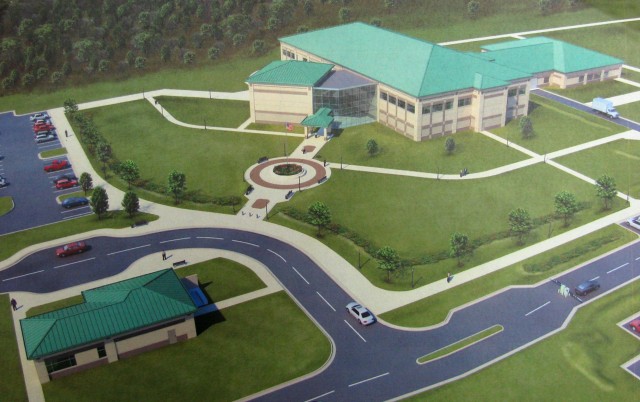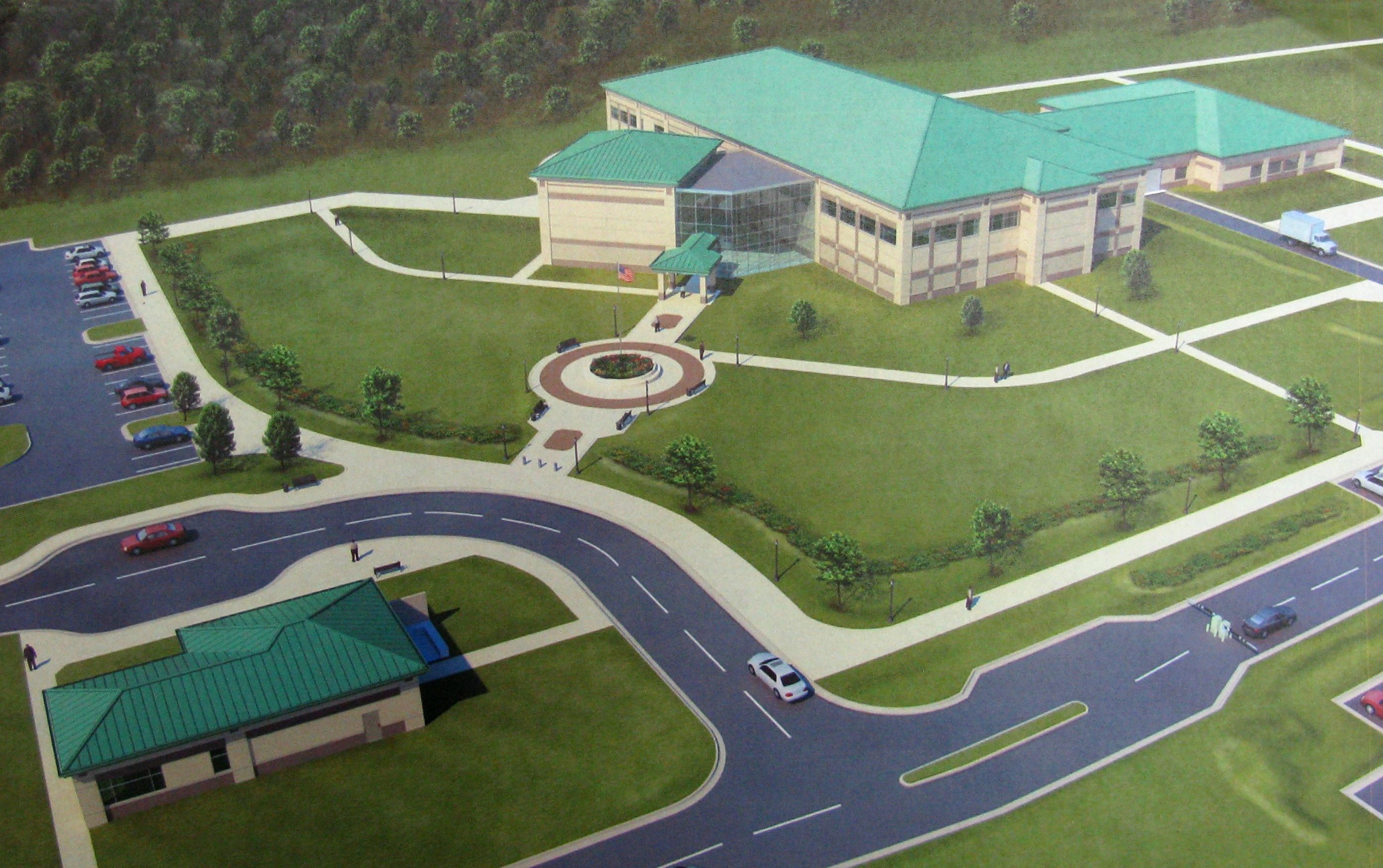The Bureau of Alcohol, Tobacco, Firearms and Explosives was looking for a place to put its explosives training.
Redstone Arsenal met its needs.
"We can't expand where we are," Jeff Groh, chief of ATF's explosives training branch, said. "So we have been looking for a new location. This location with these attributes best fits our mission."
The first phase of the training center construction began last November. It will be a convertible facility in that it will initially house classroom areas and offices until the main building is completed in mid-2010. Once those have moved into the larger building, the temporary location can be transformed for vehicle storage and other training.
"There are garage doors behind the dry wall," John Green, Garrison master planner for the project, said. "The raised computer floor comes out. The ceiling can be raised."
The first building is nearing completion. All 9,000 square feet of it are scheduled to be ready by the end of August. Construction of the second, 83,000 square foot building is scheduled to follow. Both buildings will be located between Patton and Hansen roads.
The other portion of the construction project involves a new 300-acre test range on the south side of the Arsenal along the Tennessee River. It includes observation areas and explosive storage magazines. Crews are preparing the site for the special needs of ATF, including some major league dirt.
"Because of explosives being used, they had to have dirt without rocks and debris in it," Green said. "We found a place where we could get dirt that had already been sifted and the debris removed. They also sell it to ballparks. This is the same dirt as on Turner Field (in Atlanta)."
Plans are also in the works to make use of additional space that base realignment and closure will leave vacant. McKinley and Corkern ranges are being planned for ATF use once the Ordnance Munitions and Electronic Maintenance School moves to Fort Lee, Va.
"We will be converting them as they (OMEMS) vacate," Green said.
The facilities and ranges already in use at Redstone are part of what drew the bureau here, Groh said. The organizations on post doing similar work provided the rest of the incentive.
"The biggest reason for coming here is the capabilities that Redstone already has," Groh said. "It fits with what we're trying to do. There are other entities here doing similar things. We can work together to make everyone better."
Besides working with existing Redstone organizations, ATF works with other federal agencies. They provide training in areas such as advanced explosives, investigations, pre-blast and post-blast forensics. They also provide that same training to international, federal and agency partners.
Because they are a Department of Justice bureau, the ultimate focus of their training operations is on investigation, identification of suspects and then prosecution of their case, according to Theresa Stoop, deputy assistant director for training.
"We train our team to hit the ground running. The more prepared they are then the better chance we have at solving crimes," Stoop said. "We take our proven methods that have worked for us for 30 years. We catch the criminals and go home safe. That's our goal - to make the public safe and solve every crime."


Social Sharing